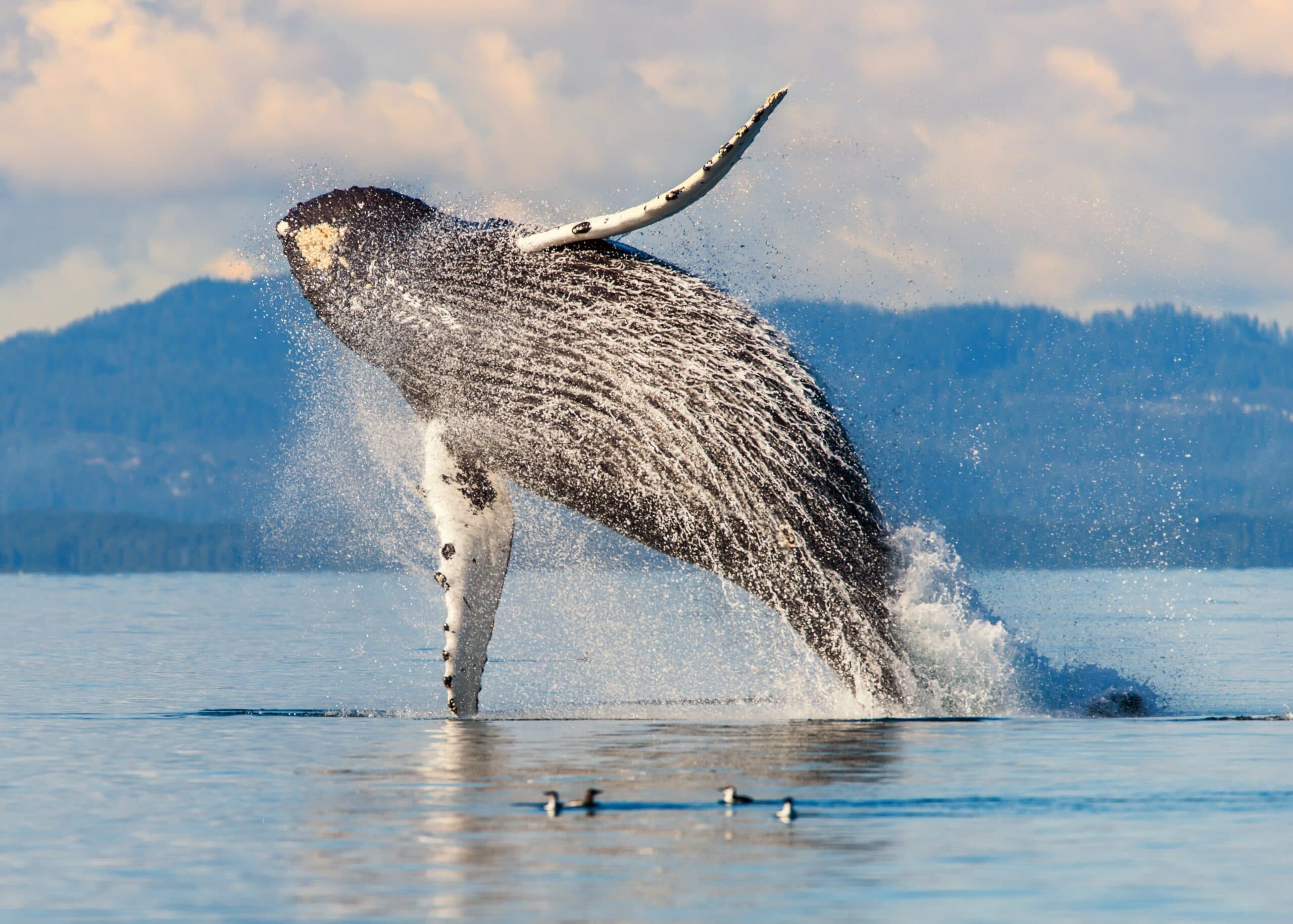
World Whale Day: Can whales help mitigate climate change?
The oceans absorbed approximately 22 percent of the carbon emissions generated by human activities between 2010 and 2019, making them critically important in the current fight against climate change. Absorbed carbon may end up being recycled or stored by marine organisms, or sinking to the bottom of the deep sea, where it can be sequestered over long time periods. Whales are the largest ocean inhabitants and, due to their size and longevity, can influence carbon dynamics in marine ecosystems. For this reason, some scientists have proposed that whales may represent a possible nature-based solution to mitigate increased carbon emissions.
While we are familiar with mitigation efforts focused on reforestation or restoring wetlands, a new study published in the journal Trends in Ecology and Evolution stresses the importance of understanding the role of whales in marine carbon cycles, and how they influence the amount of carbon in our air and waters, and may potentially contribute to the overall reduction of atmospheric carbon dioxide.
“Understanding the role of whales in the carbon cycle is a dynamic and emerging field that may benefit both marine conservation and climate-change strategies,” wrote the researchers, led by Heidi Pearson from the University of Alaska Southeast. “This will require interdisciplinary collaboration between marine ecologists, oceanographers, biogeochemists, carbon-cycle modelers, and economists.”
Whales can weigh up to 150 tons, live for over 100 years, and be the size of large airplanes. Like all living things, their biomass contains a lot of carbon and they influence the marine carbon cycles in several different ways. They feed on huge quantities of nutrient rich prey (up to 4 percent of their body weight each day) and are better at long-term storage of this carbon, given their longevity.
Once they have digested their food, whales excrete waste which enriches the water with nutrients and is used by small organisms for their own growth. Some of these organisms are phytoplankton that photosynthesize, a process that removes large quantities of carbon dioxide and incorporates the carbon into biological molecules.
Whales move across the world’s oceans during migratory journeys, transporting and spreading carbon around. Some whale species also move vertically, diving down deep to catch prey. When a whale dies, its carcass may sink to the bottom of the deep sea where the carbon from its decaying body may remain sequestered for long periods of time. Whales thus have a role in the animal-driven biological carbon pump whereby biogenic carbon is moved from the atmosphere and surface waters down to the depths of the oceans.
“Their size and longevity allow whales to exert strong effects on the carbon cycle by storing carbon more effectively than small animals, ingesting extreme quantities of prey, and producing large volumes of waste products,” wrote the researchers. “Considering that baleen whales have some of the longest migrations on the planet, they potentially influence nutrient dynamics and carbon cycling over ocean-basin scales.”
There have been several studies examining the impact of whales on the carbon cycle that hold promise for including whales in blue carbon schemes. These are nature-based solutions that take a holistic approach to mitigating climate change effects through promoting biodiversity and ecosystem preservation in coastal and marine ecosystems. The great whales are capable of removing carbon through direct pathways by storing it in their bodies and by transferring it to the deep via whale falls (carcasses). For these reasons, the authors consider that whales may indeed have a role to play in a nature-based solution for climate change mitigation.
Currently, data on the carbon sequestration potential of whales is lacking but it would be true to say that the recovery of whale populations would certainly increase their capacity as participants in the biological carbon pump. Commercial hunting, the largest source of whale population decline, has decreased populations by an estimated 81 percent and so the recovery of these populations would undoubtedly enhance the role of these marine giants in oceanic carbon cycling and carbon dioxide removal.
Today, although commercial hunting has largely ceased, whale populations continue to be affected by ship strikes, underwater noise pollution, entanglement in fishing gear, ocean warming and reduction in prey populations. They are also still caught commercially in some locations. All these factors affect the potential for whales to act as carbon removers in blue carbon schemes.
“Whale recovery has the potential for long-term self-sustained enhancement of the ocean carbon sink,” write the study authors. “The full carbon dioxide reduction role of great whales (and other organisms) will only be realized through robust conservation and management interventions that directly promote population increases.”
“While whales are capable of some degree of carbon dioxide removal, there are numerous knowledge gaps that must also be addressed by policy makers seeking to incorporate whale conservation strategies as part of their climate policy. Persistence of carbon stored in whale bodies and exported to the deep sea as whale falls via direct pathways are the best resolved and most precise, yet the largest carbon benefits may result from the indirect pathways, which are also currently the least understood. Elucidating these key unknowns, including realizing the full potential for whales to sequester carbon, presents rich opportunities for further study.”
Check us out on EarthSnap, a free app brought to you by Eric Ralls and Earth.com.
—
By Alison Bosman, Earth.com Staff Writer












